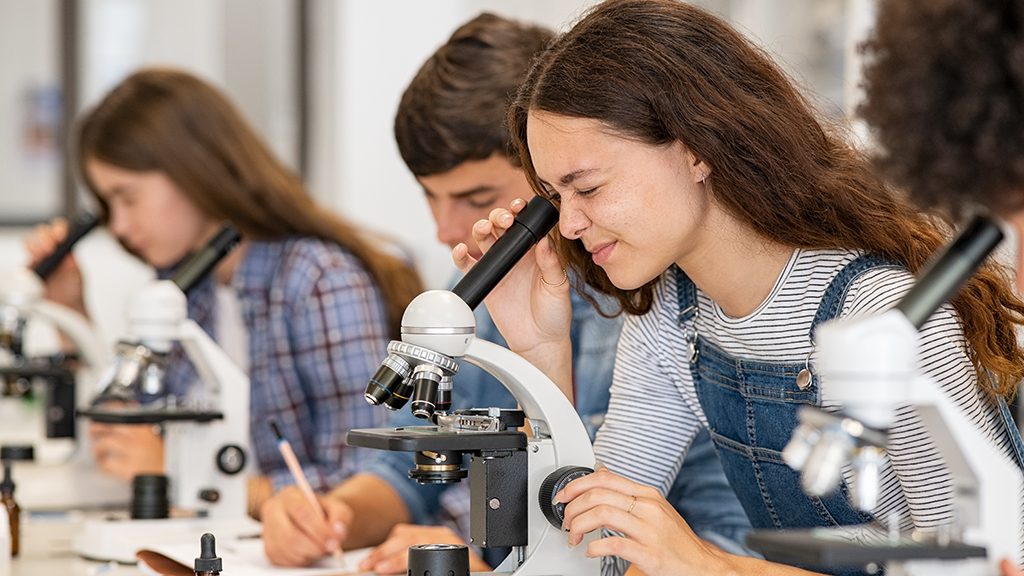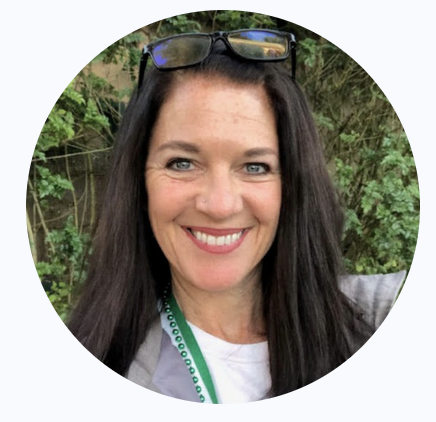Why Teaching Science to Girls Now Is More Important Than Ever
By Susan Deemer
Posted on 2025-06-20

Disclaimer: The views expressed in this blog post are those of the author(s) and do not necessarily reflect the official position of the National Science Teaching Association (NSTA).
As a middle school science teacher, I cherish the wonder on my students’ faces when they learn to balance chemical reactions and launch bottle rockets that they have engineered for the first time.
But the longer I teach, the more I realize that cultivating a scientific mindset is just as important, if not more so, beyond the classroom. This is particularly true for girls, which is why I’ve spent most of my life’s work modeling scientific thinking at girls’ schools. I teach girls to develop healthy skepticism, rather than memorize and passively accept certain truths at face value, and to recognize biases—including their own.
I do this for two reasons. First, scientific thinking can help eradicate self-defeating thought patterns and deconstruct stereotypes about girls and women perpetuated for generations. In my 29 years of teaching middle school, most of it at girls’ schools, I’ve noticed a trend regarding the ways students approach failure. In coed environments, the boys in my class would often externalize blame. “This problem was worded strangely,” some might say, or “The thermometer didn’t work.” The girls, on the other hand, tended to internalize setbacks more often, blaming themselves with statements like “Oh, I’m not good at this! I’m not good at science.” Certainly, this was not always the case, but such occurrences were frequent enough to make me pause and want to address this pattern.
To counter this habituated narrative, I encourage students to embrace mistakes, then analyze and correct them. If they can review their processes or the experiment design, then they’ll be able to reset and repeat the experiment. But if students blame their innate abilities, they’ll have a harder time building confidence and moving forward.
That’s why whenever students ask me if their data is correct, I ask them the same question, tasking them with reflecting on the hypothesis and the answer. I probe, asking them, “Do you think the data communicates some kind of pattern?” “What’s the best strategy considering the constraints?” I don’t mark them down for making mistakes during experiments; I only do so if they can’t reason with the data and uncover uncontrolled variables, if necessary. I want to shift their mindset from “right vs. wrong” to “what’s the best solution?” What we’re seeking is evidence-based causality, and that’s really the best “right answer” out there.
Second, a scientific mindset is critical as girls grow up to become consumers of products, news, and services, as well as citizens who effect change in their communities. In America, women are responsible for up to 85% of consumer spending. I want to help them develop intellectual agency, so they aren’t swayed by political propaganda, ill-formed arguments, or biases pervasive in the news and on social media today. Partisan animosity in our country has been increasing over the past four decades, and students need the skills to evaluate the polarized messaging.
For example, after my class designs experiments to measure electrolyte concentration using conductivity, we analyze skin care and sports drink advertisements. I ask students, “What data is there to support the ads that claim sports drinks make us better athletes?” “What evidence is there that the active ingredient in this cream would actually work at the cellular level?” I want them to question ads featuring 20-year-olds selling cream to prevent wrinkles.
It’s been exciting to witness them demonstrate this type of learning outside of class, too. Sometimes my students make quirky PowerPoint presentations for their parents about why they ought to be allowed to get a dog or a cellphone. “I want to use my voice and use research to convince them,” they explain. I’ve also had students who deployed scientific principles to help them with friendship troubles. They might ask, “Does this friendship make me feel good or bad about myself?” “What are the positive and negative outcomes if I take a break? What evidence from our interactions might determine if a friend is upset with me or is just having a bad day?”
Once in a while, when the school year ends, my students give me cards that read, “Thank you for helping me think more like a scientist!” Even if they do not choose to pursue science in college and in their careers, moments like these remind me about the unparalleled joy of teaching and about our shared responsibility to empower girls to keep asking questions about the world around them—with “Why?” perhaps being the most essential question of all.
 Originally from New Jersey, Susan Deemer teaches middle school science at Castilleja School, a private girls’ school in Palo Alto, California. Before that, she taught science at Burke's School in San Francisco and at Union Township School in Hampton, New Jersey. Deemer was recognized as a California finalist for the Presidential Award for Excellence in Math and Science Teaching by the National Science Foundation in 2005, and she has earned National Board Certification, first in 2011 and again in 2021. In addition to teaching eighth-grade science, Deemer supports teachers on their journey to achieve National Board Certification as a facilitator for Stanford University’s National Board Resource Center.
Originally from New Jersey, Susan Deemer teaches middle school science at Castilleja School, a private girls’ school in Palo Alto, California. Before that, she taught science at Burke's School in San Francisco and at Union Township School in Hampton, New Jersey. Deemer was recognized as a California finalist for the Presidential Award for Excellence in Math and Science Teaching by the National Science Foundation in 2005, and she has earned National Board Certification, first in 2011 and again in 2021. In addition to teaching eighth-grade science, Deemer supports teachers on their journey to achieve National Board Certification as a facilitator for Stanford University’s National Board Resource Center.
The mission of NSTA is to transform science education to benefit all through professional learning, partnerships, and advocacy.


